This article refers to Barracuda Message Archiver Legacy Release firmware or higher, and a Microsoft Exchange Server 2013, 2016, or 2019 environment utilizing Standard Journaling, also known as mailbox database journaling.
If your Exchange environment has Premium Journaling capability, and you want more granular control over journaling, use the set up details in the article How to Configure Envelope (SMTP) Journaling for Microsoft Exchange Server 2013 and Newer - Premium Journaling.
Microsoft Exchange allows a Journal recipient to be either a mailbox or a contact. By using a contact with an email address that is part of a non-existent domain, you can create a send connector that uses SMTP to deliver journaled mail to the Barracuda Message Archiver. Use the steps in this article to configure Envelope Journaling.
Step 1. Register Each Exchange Server as a Trusted SMTP Server
To ensure that archiving begins as soon as your Exchange Servers are configured to send journal copies, first register each Exchange Server that is in a Client Access Server (CAS) role as a Trusted SMTP Server with the Barracuda Message Archiver on the Mail Sources > SMTP page in the web interface.
- Log into the Barracuda Message Archiver web interface, and go to the Mail Sources > SMTP page.
- In the Trusted SMTP Servers section, enter the details for each Exchange Server that is to journal directly to the Barracuda Message Archiver; click Add after entering the details for each Exchange Server, and then click Save.
Step 2. Create a Remote Domain From the Exchange Management PowerShell
The Remote Domain must not be your normal email domain. The remote domain must be a non-existent and non-routable/unresolvable domain from either inside or outside your organization (such as bma.int). This domain must be used for the email address of the Mail Contact that is to be the journaled message recipient.
- Open the Exchange Management Shell.
- Enter the following command to create the remote domain; this command ensures TNEF encoding is disabled:
New-RemoteDomain -DomainName bma.int -Name "Message Archiver Domain" - Enter the following command to enable auto-forwarding:
Get-RemoteDomain | Where {$_.DomainName -eq "bma.int"} | Set-RemoteDomain -TNEFEnabled $false -AutoForwardEnabled $true - Enter the following command to verify the settings:
Get-RemoteDomain | Where {$_.DomainName -eq "bma.int"} |Format-table Name, DomainName, TNEFEnabled, AutoForwardEnabled
Step 3. Create a Recipient Mail Contact/Alternate Email Address
The Mail Contact is the account that is to act as a "holding location" for journaled messages. The email address associated with this account is the designated recipient and must be associated with a non-existent, non-routable dummy Domain Name created above in Step 2. Create a Remote Domain From the Exchange Management PowerShell. Use the following steps to create the Mail Contact:
- Log into the Exchange Admin Center (EAC), and click recipients > contacts.
- Click the + symbol, and click Mail contact:

- In the new mail contact dialog box, enter the following details:
- First name – Type Barracuda
- Initials – Leave this field blank
- Last name – Type Journaling
- Display name – This field automatically populates
- Alias – Type BMA_Journaling
- External email address – Type bma_journaling@bma.int
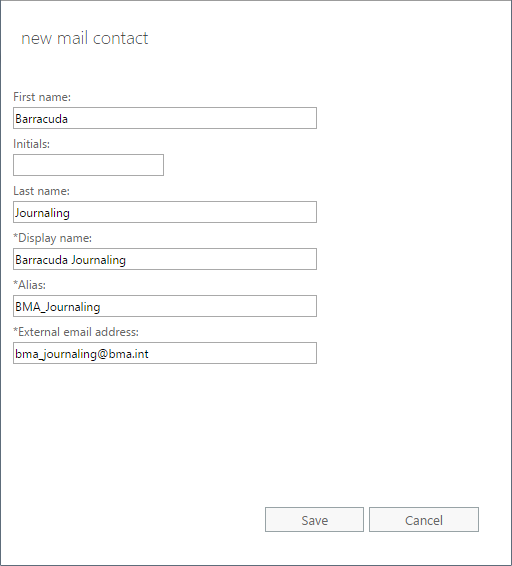
- Click save.
Step 4. Create a Send Connector for the Remote Domain
To route journaled mail that is sent to the contact to the Barracuda Message Archiver, use the following steps to create a Send Connector for the Remote Domain:
- Log into the EAC, click mail flow in the left pane, select send connectors at the top of the page, and then click the + symbol to create a new send connector:
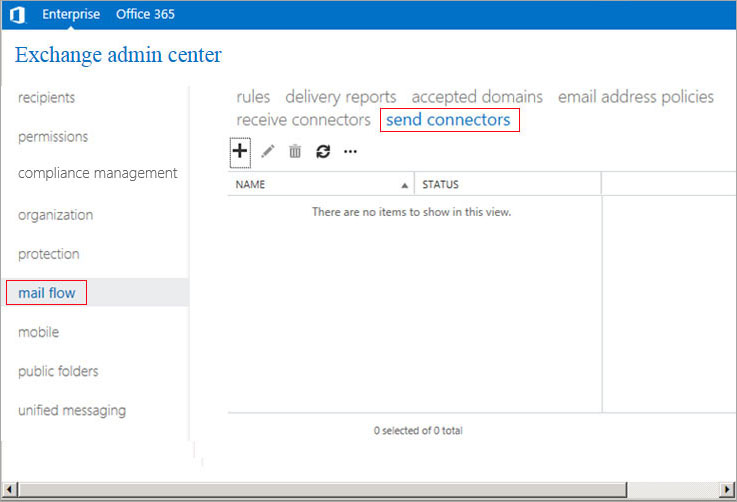
- In the Name field, enter a name for the connector, and in the Type section, select Custom:
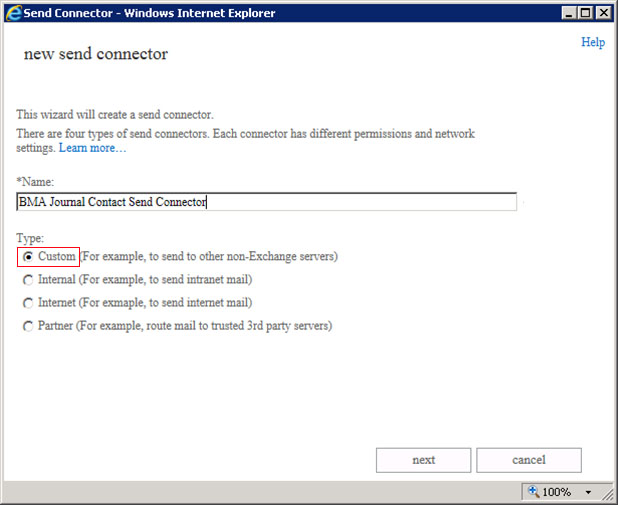
- Click next. In the Network settings page, select Route mail through smart hosts:
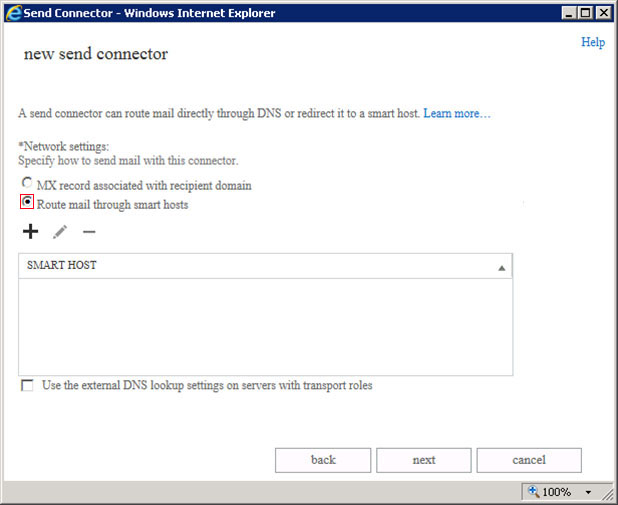
- Click next. In the add smart host page, enter the Barracuda Message Archiver fully qualified domain name (FQDN) or IP address:
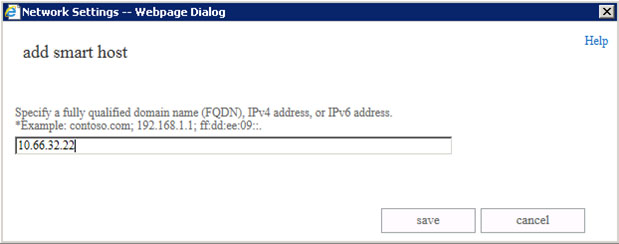
- Click save. the FQDN or IP Address displays in the SMART HOST list; verify the address:
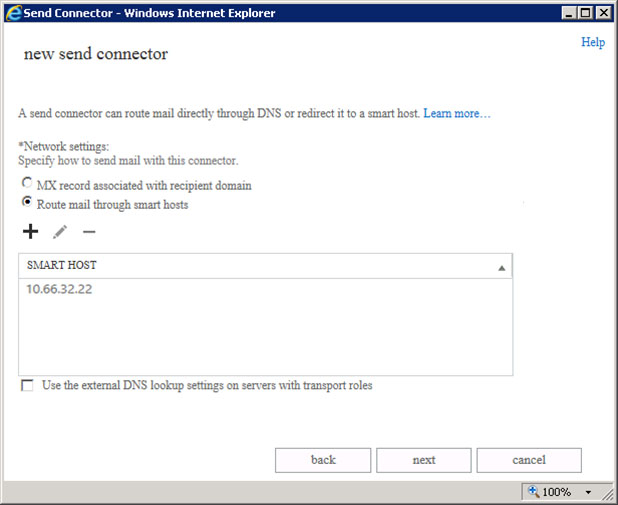
- Click next. In the Smart host authentication page, because authentication is not used on the smart host connection to the Barracuda Message Archiver, no changes are necessary; click next:
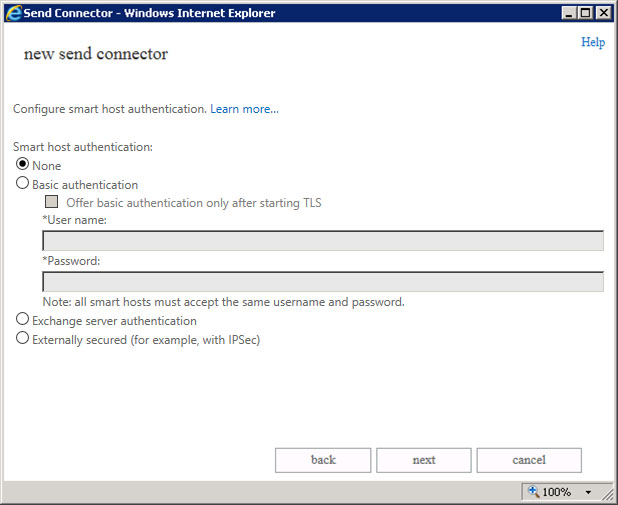
- In the Address space section, click the + symbol:
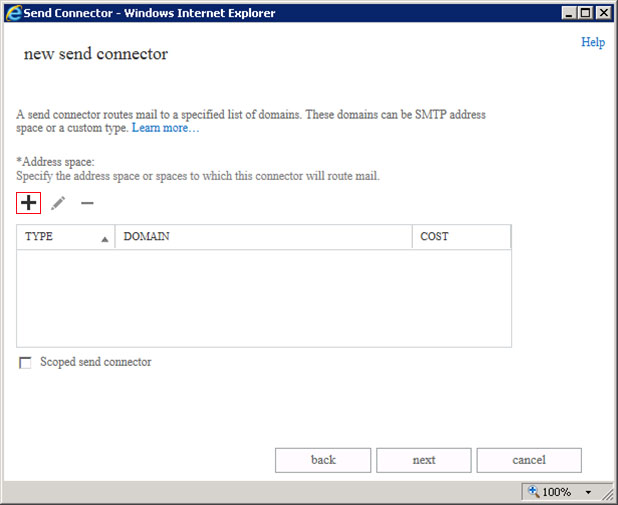
- In the Address Space page, enter the domain that matches the domain for the external email address used to create the journal contact, for example, bma.int (see Step 2. Create a Remote Domain From the Exchange Management PowerShell):
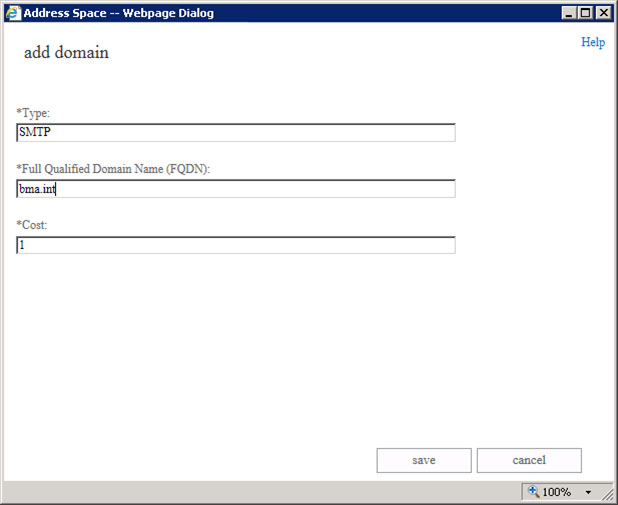
- The domain is added to the Address space list:
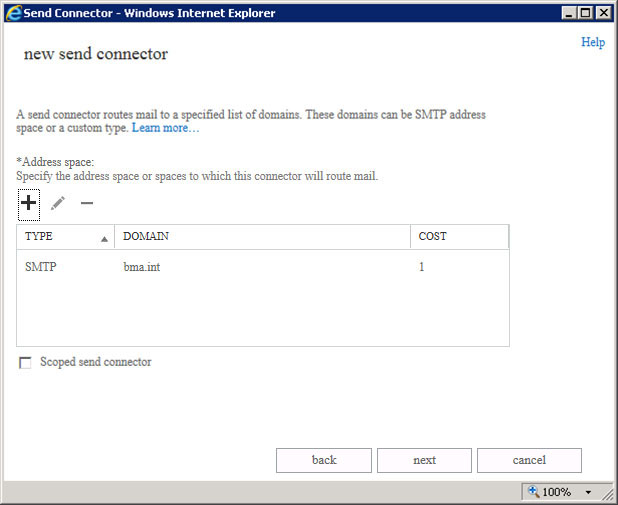
- Click next. In the Source server section, click the + symbol:
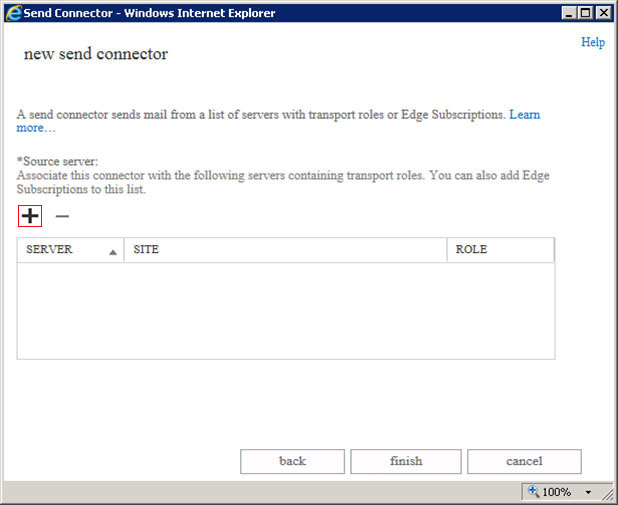
- Verify all of the appropriate Exchange Servers are listed; click add to add additional servers:
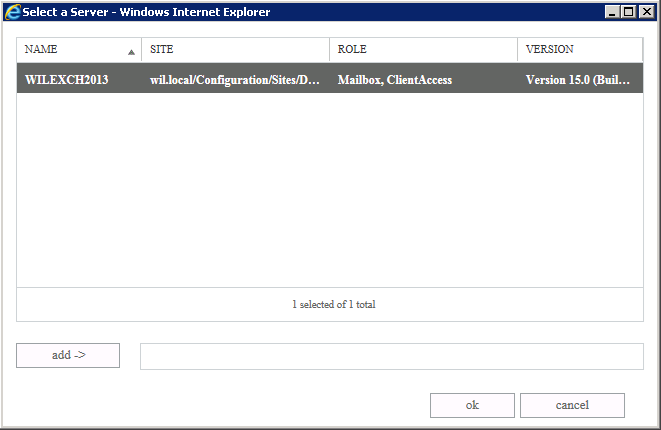
- Click ok. In the Source server page, the selected servers display:
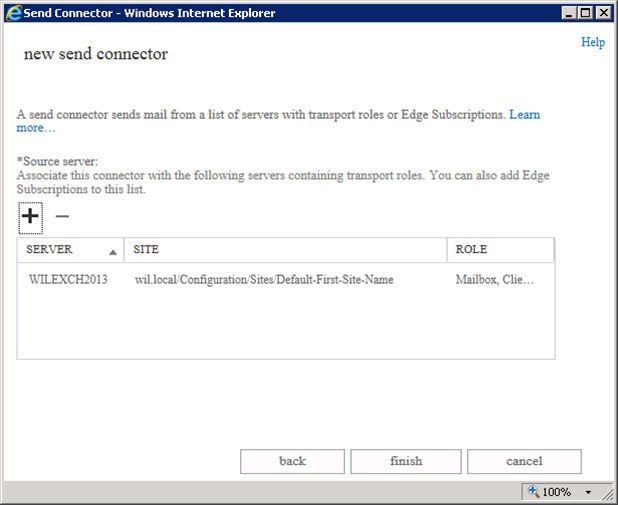
- Click finish. The new send connector displays as enabled in the send connectors list:
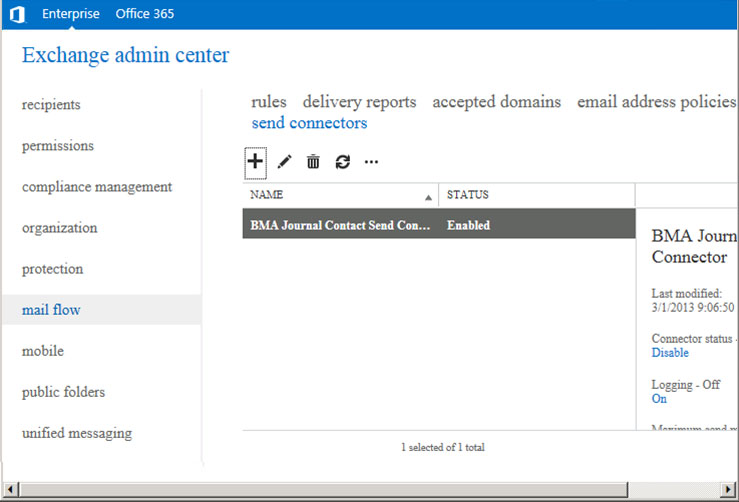
- Click the Edit (
 ) icon to edit the Send Connector properties. From the Maximum send message size (MB) drop-down list, select unlimited, and then click save:
) icon to edit the Send Connector properties. From the Maximum send message size (MB) drop-down list, select unlimited, and then click save: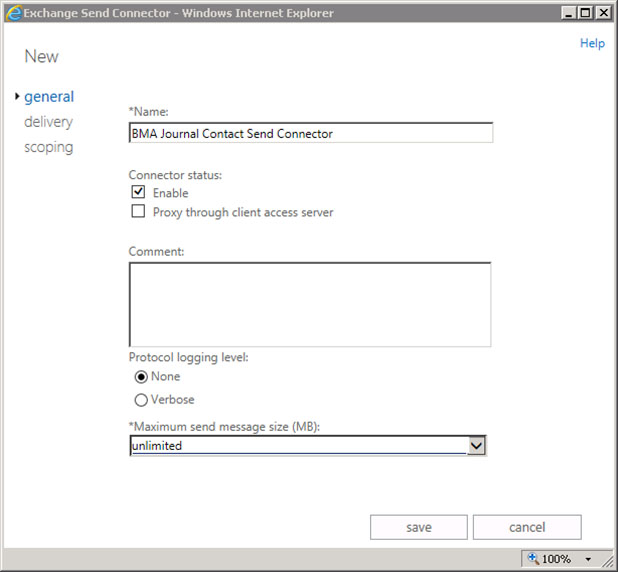
Step 5. Set Up Mailbox Database Journaling
Use the following steps to set up mailbox database journaling:
- Log into the EAC, click servers in the left pane, select database at the top of the page, and then click the Edit (
 ) icon to edit the database properties:
) icon to edit the database properties: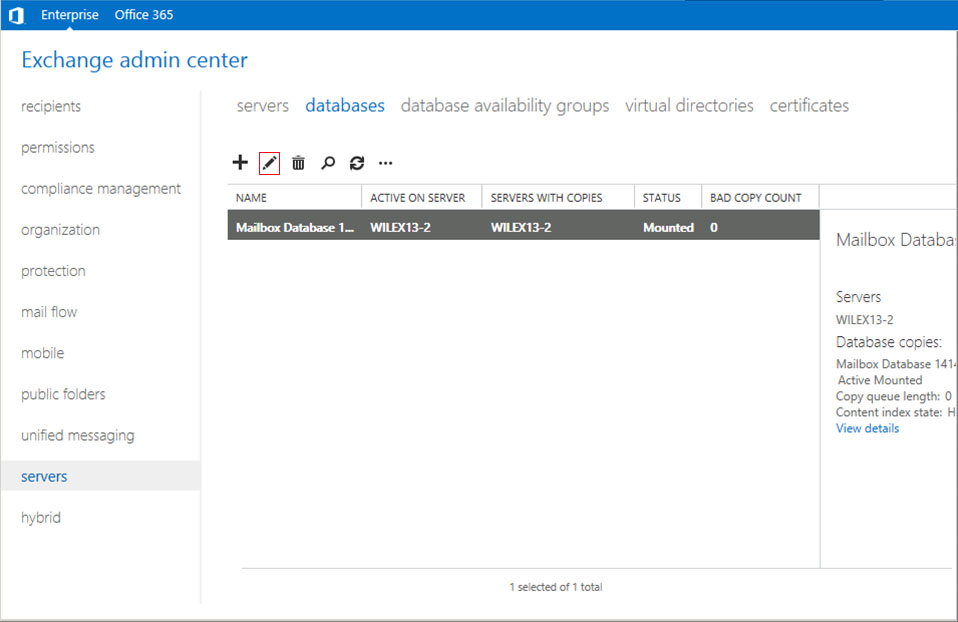
- In the Properties page, click maintenance in the left pane:
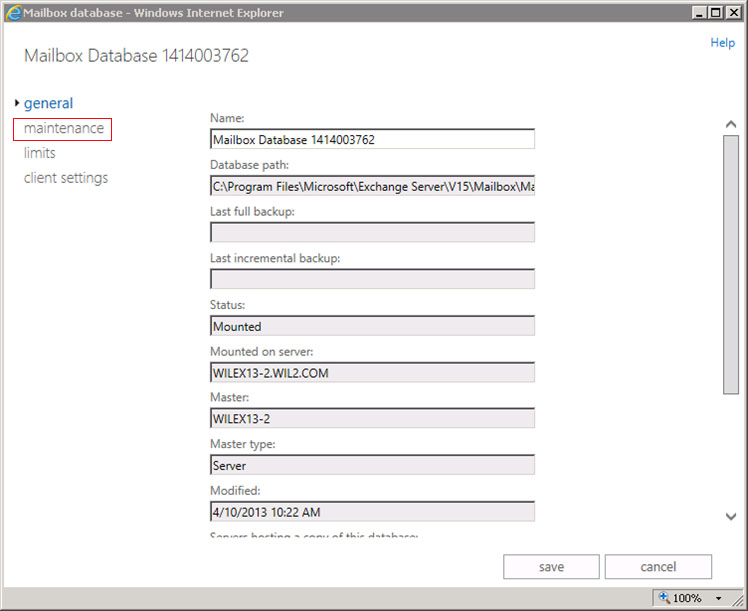
- In the maintenance page, click browse following the Journal recipient field:
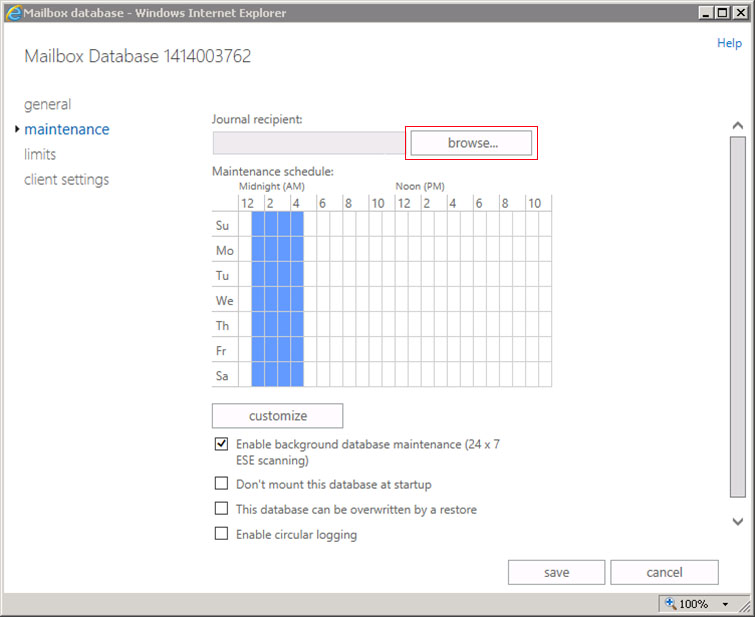
- Navigate to and select the destination location for journaled messages, for example journal@bma.int:
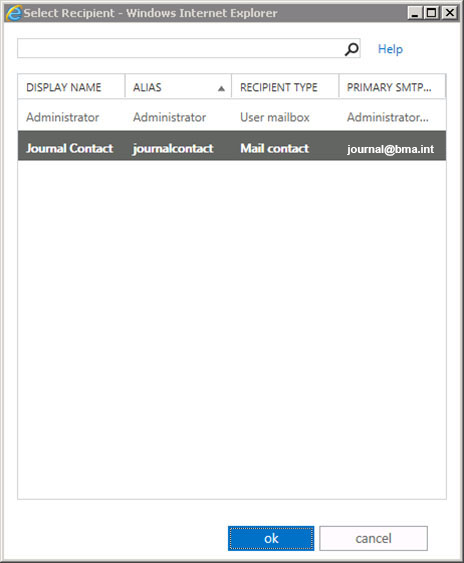
- Click ok to select the journal message recipient. The recipient displays in the maintenance page:
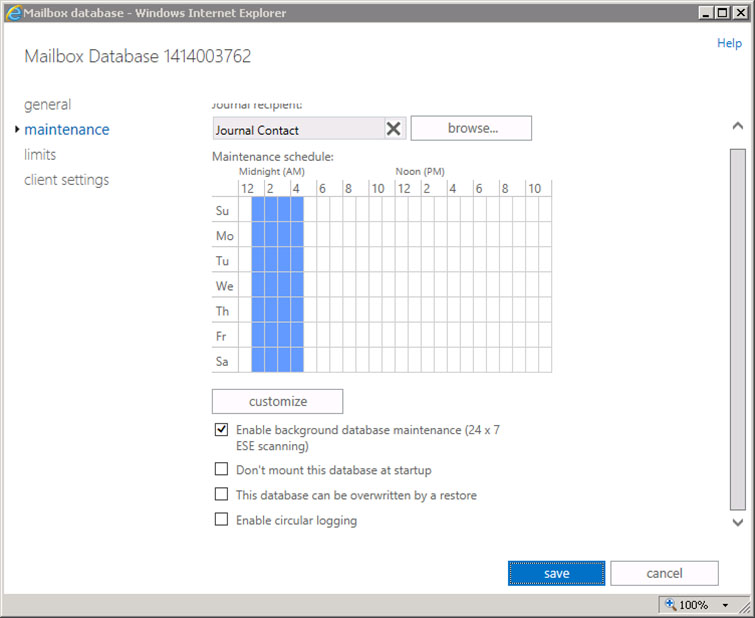
- Click save to save your settings.
